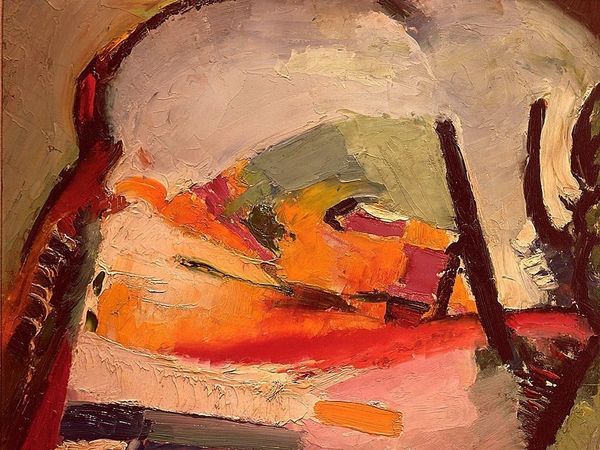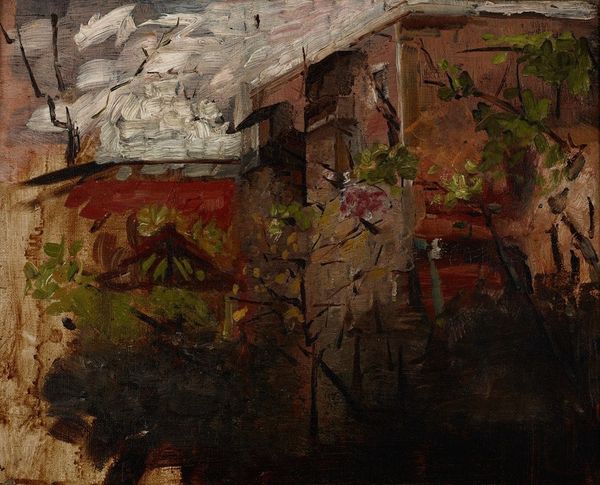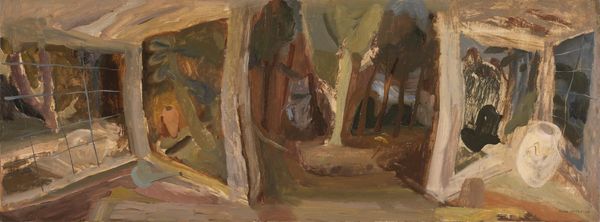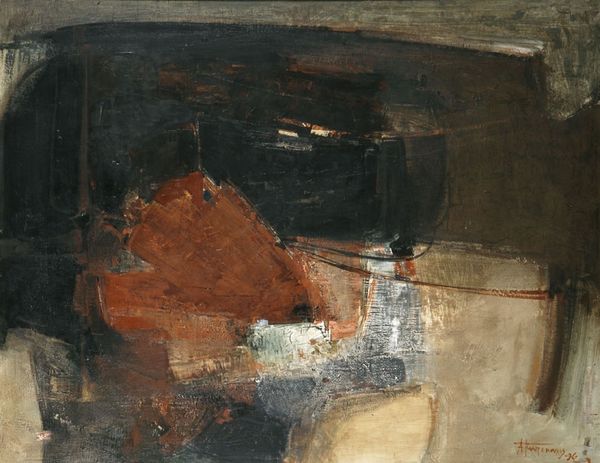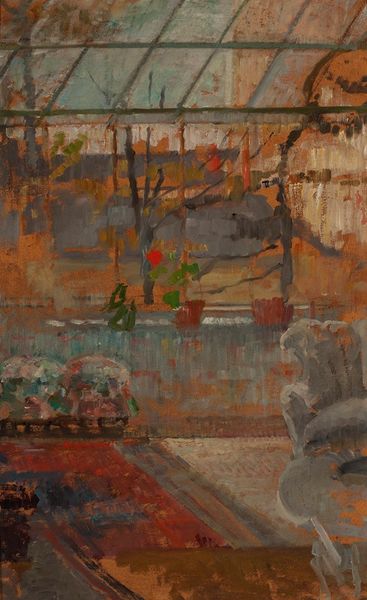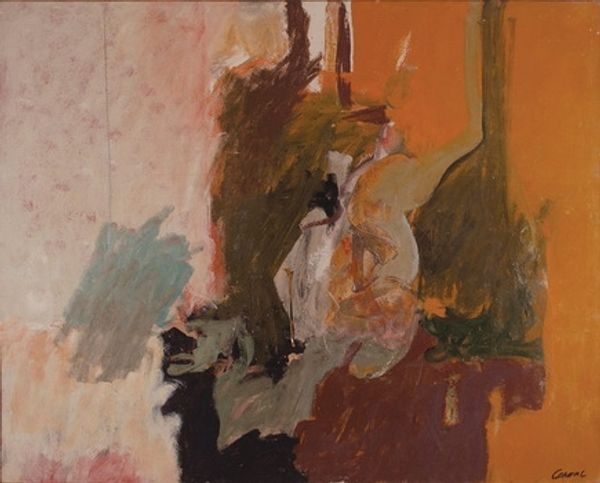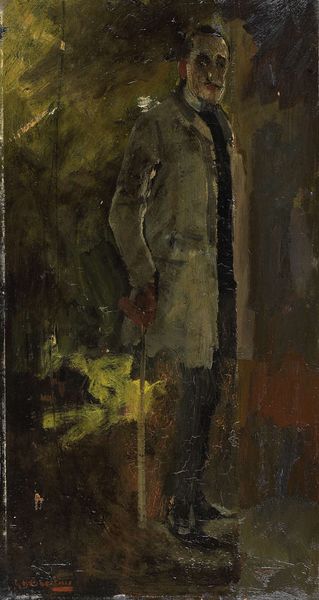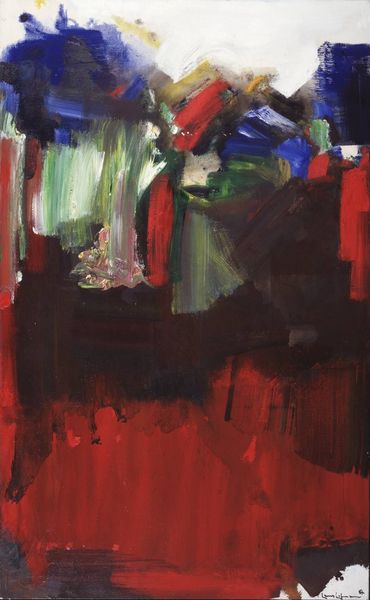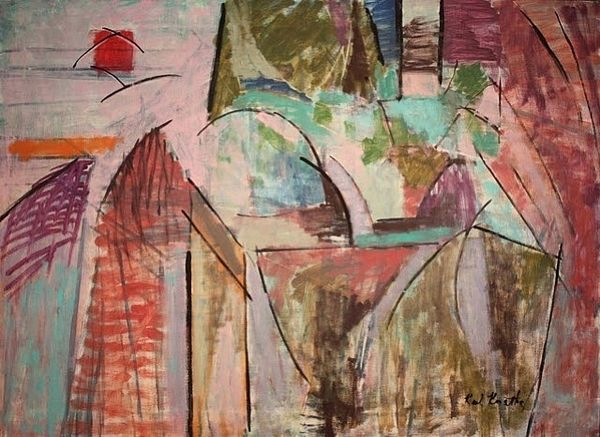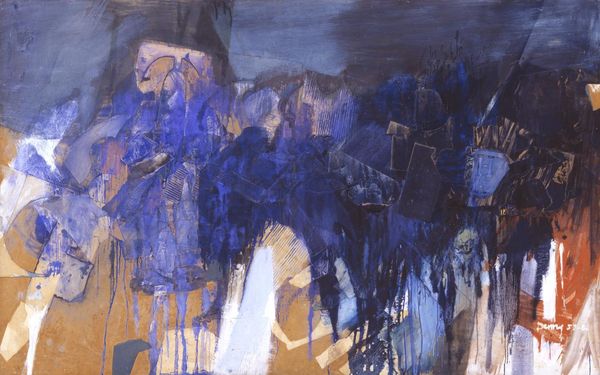
Dimensions: support: 591 x 1613 mm frame: 875 x 1885 x 100 mm
Copyright: © The estate of Ivon Hitchens | CC-BY-NC-ND 4.0 DEED, Photo: Tate
Editor: This is Ivon Hitchens' "Forest Edge No. 2," held at the Tate. It's an intriguing landscape! The brushstrokes feel urgent, almost violent, and the color palette is so earthy. What meanings do you find in it? Curator: The earthy tones create a sense of groundedness, but also a feeling of decay. Notice the vertical thrust of the trees against the horizontal format; what do they represent to you? Editor: Perhaps the tension between nature's growth and inevitable decline? Curator: Precisely! Hitchens uses the forest's edge as a threshold—a place where the known world meets the wild unknown, evoking both comfort and unease. It's a powerful cultural symbol. Editor: I see that now; it's more than just a landscape. Curator: Symbols embedded in nature are a form of cultural memory. Editor: That makes a lot of sense. I’ll look at landscapes differently from now on!
Comments
tate 7 months ago
⋮
http://www.tate.org.uk/art/artworks/hitchens-forest-edge-no-2-t00873
Join the conversation
Join millions of artists and users on Artera today and experience the ultimate creative platform.
tate 7 months ago
⋮
In the 1920s and 1930s Hitchens participated in progressive artists’ societies and experimented with pure abstraction. His definitive return to landscape subjects corresponded with his move to Sussex after a bomb destroyed his London studio in 1940. Settling first with his family in a gypsy caravan in Lavington Common, near Petworth, he turned his focus to the local landscape in all its seasons and conditions. In this work, broad sweeps of damp, autumn colours lead the viewer’s gaze down a series of deep arboreal vistas. Gallery label, May 2007

